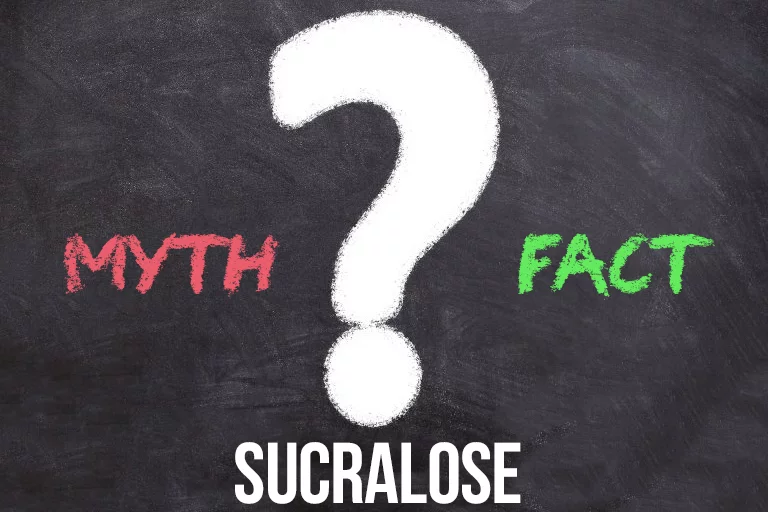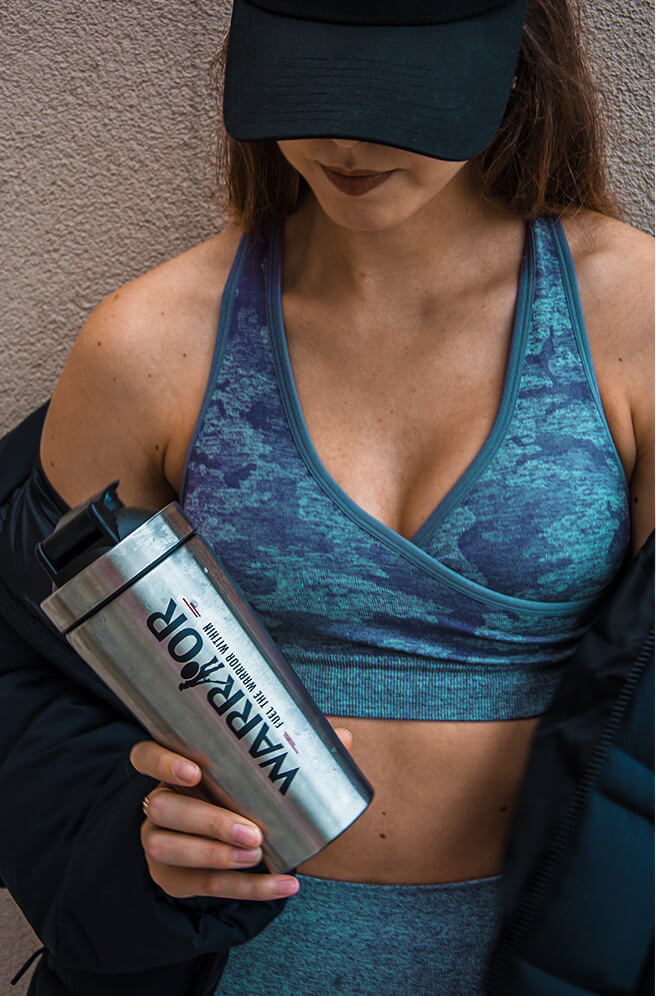Sucralose - Myths vs. Facts - Is It Really Harmful?

Sucralose is a non-caloric sweetener that contributes to the sweetness of foods and beverages without adding unnecessary calories or carbohydrates. It is made from regular table sugar (sucrose). However, it is not the same as sugar.
in recent research, SCIENCE denies that the use of the artificial sweetener sucralose has detrimental effects on our health.
Yes, you read well - science denies it. How is it possible?
The research behind this was carried out by Uebanso et al. in 2017, when they administered 15 mg of sucralose per day to 1 kg of body weight to mice for 8 weeks. During this time, they have seen a decrease in bacteria called Clostridium cluster XIVa. (note: their deficiency facilitates the colonization of pathogens and infections)
You can read the whole study here.
but what does this mean for us humans?
Read these 3 interesting facts:
First of all, it is necessary to clarify how much sucralose it is. 15 mg per 1 kg of body weight is a very high dose, it is three times the recommended daily intake! The recommended daily intake is 5 mg sucralose per 1 kg body weight.
Another important fact is the life age of mice and humans. 8 weeks is about 6 human years for a mouse!
To reduce the Clostridium cluster XIVa. in the intestines, an 80 kg individual would have to consume 1200 mg (1.2 g) of sucralose daily, regularly for several consecutive weeks!
Does sucralose contain chlorine?
Yes, the sucralose molecule contains three chlorine atoms, which is the key to intensifying the taste of sugar and removing calories.
However, there is no reason for safety concerns. In the case of sucralose, the addition of chlorine atoms converts sucrose (sugar) to sucralose. Chlorine in sucralose does not separate in the body, nor does it accumulate sucralose in it!
The presence of these chlorine atoms prevents sucralose from breaking down into energy in the body, making this type of sweetener calorie-free.
sucralose enters and exits the body all the way as sucralose!
Is sucralose toxic to good bacteria in the gut?
A theme celebrated over the years, which is especially popular with the advocates of an explicitly natural way of reconciling food and drink.
However, it is interesting for marketing, but not quite accurate.
In the study ("in vitro" - it was not a physiological process!) that we present to you, you read that in experiments aimed at measuring the toxicity of artificial sweeteners, some (several thousand species of bacteria live in the intestines) bacterial strains of E. coli were examined, which exposed distinct levels of different types of artificial sweeteners and found that some of the strains had increased stress values - these were doses of sucralose 1000 mg / l and saccharin 2000 mg / l (equivalent).
And so again - the lowest dose that caused the imbalance was still up to 6 times higher than is commonly found in food or beverages.
The study confirms that artificial sweetener sucralose (and others) causes stress to some E. coli strains in vitro when exposed to supraphysiological (very high) doses.
You can read the whole study here.
learn to separate facts from fiction and fear!
It is important to point out the significant difference between the toxicity of artificial sweeteners and consumption: just because something has toxic potential does not mean that it is indeed toxic.
Vitamin A, copper, or even selenium, for example, have a lower toxicity threshold compared to sucralose.
First, it should be borne in mind that in order for a substance to be marketed, it must undergo a regulatory safety assessment. Only then can it be released on the market for human consumption.
Sucralose is one of the artificial sweeteners approved by the Food and Drug Administration (FDA) as well as in the European Union through EFSA (European Food Standards Agency).
It was approved by the FDA as a table sweetener in 1998, followed by approval as a general sweetener in 1999.
Such approval shall be preceded by the submission of scientific technical data (chemical composition, production methods, stability,…), a safety study, including the expected daily intake within the different age categories.
This safety information is derived from toxicological studies in animals. Due to concerns about use in the human population, these studies must be performed in animals with a similar pharmacokinetic profile.
Apart from the toxicological data on animals required for FDA approval, there are no major studies examining the potentially dangerous effects of these sweeteners.
The effect of sucralose on chronic conditions such as obesity and diabetes, and their association with chronic conditions, have also been studied in detail.
Observational researches linking low-calorie sweeteners to weight gain cannot naturally show a connection, while randomized clinical tests support that low-calorie sweeteners such as sucralose may be useful in weight loss and weight maintenance.
In randomized studies, sucralose has no effect on blood sugar levels or insulin levels and has no effect on appetite.
A healthy, active lifestyle that is tailored to personal goals and priorities is vital to us.
Choosing foods and beverages sweetened with low-calorie sweeteners, such as sucralose, is one way to control your sugar and calorie intake, which are equally important components in maintaining good health.
Consumers are increasingly looking for so-called food and nutritional supplements. "Pure" labels, i.e. some "known", most often short, easy-to-pronounce words - no ingredients, no sugar, no fat, low calorie, fit and "healthy", minimally processed, no emulsifiers, preservatives and the like.
Some food ingredients, such as artificial colours, flavours and sweeteners, are considered "unhealthy" and "unknown".
As a result, we also try to familiarize you with the raw materials that we use and mostly those that are not commonly found in food.
However, many additives with long chemical names are actually substances that are familiar to consumers and accepted by their common names. For example, acetic acid is vinegar, L-ascorbic acid is vitamin C, alpha-tocopherol is vitamin E and diglycerides are a type of fat.
However, it is not the name that matters, but whether or not the ingredient has been approved by the Food and Drug Administration (FDA) after a thorough examination of the safety evidence.
As with all foods, additives, nutritional supplements, as well as sucralose, the most important parameter for trouble-free use is a reasonably set dosage.
The best example to compare is ordinary drinking water - a liquid without which there would be no life. If you overdo it with water, it means that you would decide to drink, for example, 10 litres a day for 8 weeks, you will endanger your natural thermoregulation, the basic functions of the kidneys, urinary system, etc. nothing pleasant right? Therefore, use EVERYTHING with common sense and the right information.




